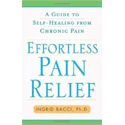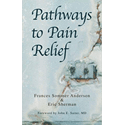Not knowing what you’re feeling Emotionally can manifest Physically

There’s been more and more research emerging on the role of what’s called alexithymia and it’s role in health complaints in the body. Alexithymia literally means “lack of words for emotions” or is defined as the inability to recognize or describe one’s own emotions. We know emotions can play a role in the production or amplification of somatic symptoms. With alexithymia, a person does not connect the symptom to an unexpressed or unacknowledged emotion and therefore believes the symptom is a physical health issue.
Here’s a few recent research studies that show how this works. This 2023 study found that high levels of alexithymia are found in up to 55% of people with essential hypertension. Another here found alexithymia was significantly present in asthma patients, with most studies reporting a higher prevalence (from 9 to 62.8%) than in control groups (approximately 10%). This 2018 study ‘results suggested that the association between psychosocial stress and reported somatic symptoms is mediated by alexithymia and somatosensory amplification in psychosomatic patients. The average number of reported somatic symptoms was 4.8; the most frequent was fatigue (75.3%), followed by insomnia (56.1%), low-back pain (49.5%), headache (44.7%), and palpitations (43.1%).’ Lastly, this 2022 study found “The prevalence of alexithymia in fibromyalgia (FM) averaged 48%. Due to the high level of alexithymia in people with FM and the positive relationship of alexithymia with pain and psychological distress, interventions to improve emotional awareness, expression, and processing in FM are recommended.”
There are more studies and I will share them at another time. It is important to realize alexithymia is associated with many types of physical symptoms. Many people believe they are having physical health issues when they may just having emotions arising in them that they misconstrue as physical symptoms. With alexithymia, we need to learn to build emotional awareness and expression skills and to understand that emotions that are not recognized emotionally may be contributing to or coming out physically in the body as somatic symptoms.






